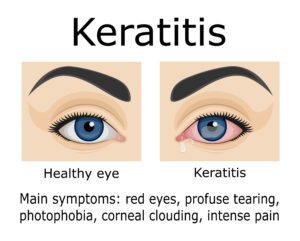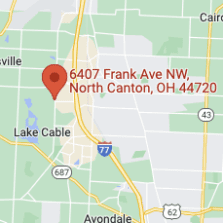We all need to catch some shut-eye, but contact lens users should make sure they remove them before sleep. According to a CDC report, about one-third of all contact lens wearers leave them in when sleeping. Most people who sleep with their contact lenses in, awake to slight dryness that usually resolves itself or requires a few eye drops.
However, you risk eye infection every time you leave contacts in at night. So if you’ve ever wondered, “Can you sleep with contacts in?”, just know that you shouldn’t. If you’ve done it in the past but didn’t contract an infection or experience an abrasion, consider yourself lucky—but it’s not worth your time or money to deal with.
Why You Shouldn’t Sleep With Contacts in, Even if They’re Approved
Some modern contact lenses are advertised as being safe for extended periods without needing to be changed. While it makes for a great selling point, leaving your contacts in overnight is still dangerous. Sleeping with contact lenses in increases your risk of infection by six to eight times.
You might be wondering, “Can you take a nap with contact in?” Although a typical nap is shorter than the recommended 8 hours of nighttime sleep, it’s still best to remove your contact lenses.
What Can Go Wrong?
When you sleep with contacts in, you run the risk of a serious infection or possible vision loss in severe cases. Here are some of the infections people contract when they don’t remove their contacts before bed.
Bacterial Keratitis
When you put your contacts in or take them out, bacteria from your fingertips can cause bacterial keratitis. Bacterial keratitis causes corneal inflammation and can also be intr oduced and transferred by the storage container (contact lens case), so keeping yours clean can help you avoid infection. Another way bacterial keratitis gets into your eye is when you don’t use contact solution and instead use water or if you “top off,’ meaning adding fresh contact lens solution to old contact solution from the night before.
oduced and transferred by the storage container (contact lens case), so keeping yours clean can help you avoid infection. Another way bacterial keratitis gets into your eye is when you don’t use contact solution and instead use water or if you “top off,’ meaning adding fresh contact lens solution to old contact solution from the night before.
Leaving your contact lenses in overnight only increases your chances of developing this bacterial infection. Without proper treatment, it can cause permanent vision loss from scar tissue.
Acanthamoeba Keratitis
Single-celled organisms called Acanthamoeba—commonly found in water bodies, HVAC systems, soil, and more—sometimes make their way into your eyes. This organism causes inflammation of the cornea that could lead to partial vision loss or even blindness.
Contact lens wearers are at major risk of developing Acanthamoeba keratitis, with 85% of cases being contact wearers. Poor hygiene and bad habits like wearing contact lenses while swimming in pools, lakes or oceans or in the shower all put you at higher risk for infection. Again, using any form of tap water for cleaning your lenses also puts the contact lens wearer at greater risk. As you can imagine, sleeping with contacts in also contributes to an increased risk.
Fungal Keratitis
Corneal inflammation caused by a fungus called fungal keratitis may lead to partial visionloss or blindness when not treated properly. These kinds of infections are more common in tropical areas but do occur in all climates. Standard treatment for fungal keratitis is usually antifungal medication, but severe cases may call for surgery or a corneal transplant.
As a contact lens wearer, you’re at an elevated risk for fungal keratitis, especially if you’ve had an eye injury involving plants, such as a stick or thorn. Of course, sleeping with your contacts in can worsen your infection.
What To Do if You Fall Asleep With Them In
It’s easy to forget your contacts are in before bed. Accidents happen, but as soon as you remember you left them in, carefully remove them. At first, you might find it difficult to remove your contacts because they’ve dried out. In that case, use eye drops or blink until they become easily removable. Do not try to pull them out if they feel stuck.
After removal, give your eyes a break from contacts for at least a day. During that time, monitor the way your eye feels, and if you notice any signs of infection such as redness, change in vision and/or discharge from the eye, stop wearing contacts altogether and schedule an appointment with your eye doctor.
Common eye infection symptoms include:
- Blurry vision
- Eye discharge
- Redness
- Pain or discomfort
- Excessive tearing
- Light sensitivity
- Swelling
- Itchy or burning sensation
Find Your Vision Solution With Us
Contact lenses have their advantages over glasses, but neither can beat the convenience and benefits of LASIK. If you’re tired of maintaining your prescription or the constant risk of infection, learn more about our LASIK Center services. Our award-winning doctors are happy to help you explore your options. Schedule an appointment to see if LASIK is right for you.
Sources Cited
Stanborough, R.J. (2019) Sleeping with contacts in: Just how bad is it for your eyes?, Healthline. Available at: https://www.healthline.com/health/eye-health/sleeping-with-contacts#eye-care-tips/














Recent Comments